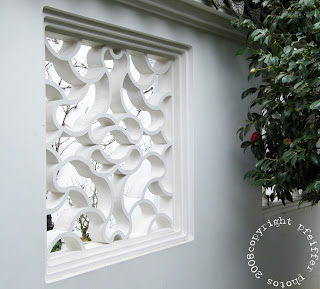History of Scholar’s Gardens
The city of Suzhou is located approximately 50 miles west of Shanghai on the eastern coast of China. It was founded in 525 BC and is one of China’s oldest cities. It has a mild climate, similar to Portland’s. By 1,000 AD, it had become a thriving city with an economy based on trade. It was also a place for government officials to retire. These retiring Imperial court officials built housing compounds that featured beautiful gardens. These gardens attempted to duplicate nature found in traditional Chinese landscape paintings, and the nature of the nearby Yellow Mountains. The gardens would be used to entertain guests and undertake intellectual pursuits such as painting, poetry, and conversation. Our Garden is based on a garden built in Suzhou during the Ming Dynasty (1368-1644 AD).
Construction
The Garden was built on land donated by Northwest Natural [Gas] who had for 20 years used it as a parking lot. The groundbreaking ceremony was held in July 1999, and construction was completed in September 2000. The majority of the materials used in the construction of the Garden originated in China. Approximately 65 workmen from Suzhou created the structures and completed the work. An American construction company did the site preparation and foundation work. The Garden is in compliance with all current U.S. construction codes, and was completed at a total cost of approximately $12.8 million.


View of Zen and Leak Window
Plants
The majority of the plants in the Garden are indigenous to China; however, they were grown in the United States. Current import bans prevent plants from being brought directly from China. Prior to these recent bans, plants were brought from China to the U.S. and their offspring are what you will see today. Some plants are more than 100 years old and were transplanted from gardens and nurseries in Oregon.
Culture of Tea
Located inside the Garden’s Tower of Cosmic Reflections is the Tao of Tea, a local tea company promoting the art and culture of tea. The earliest book on tea was written by Lu Yu between 760 CE and 780 CE (Tang Dynasty). In China, tea is a social process, a custom which involves not just the herbal or medicinal values of tea but social engagement. Guests are always served tea, no matter the time of day. Accompanying the tea are small dishes to enhance the tea and stimulate conversation among friends or guests.
Photos displayed in this post are from a previous visit to the Garden, and are available for purchase as prints (various sizes) or blank note cards. Visit my Etsy shop or contact me for details and pricing...thanks!
Photos copyright pfeiffer photos 2008 - all rights reserved.
Text about PCCG - copyright Portland Chinese Classical Garden website, 2008.






















2 comments:
sooo exciting!! you will have a wonderful time. Can't wait to see the results
char: It's never the same place twice so we'll see the influence of winter...glad you enjoyed it. :)
Post a Comment
Our friends said: